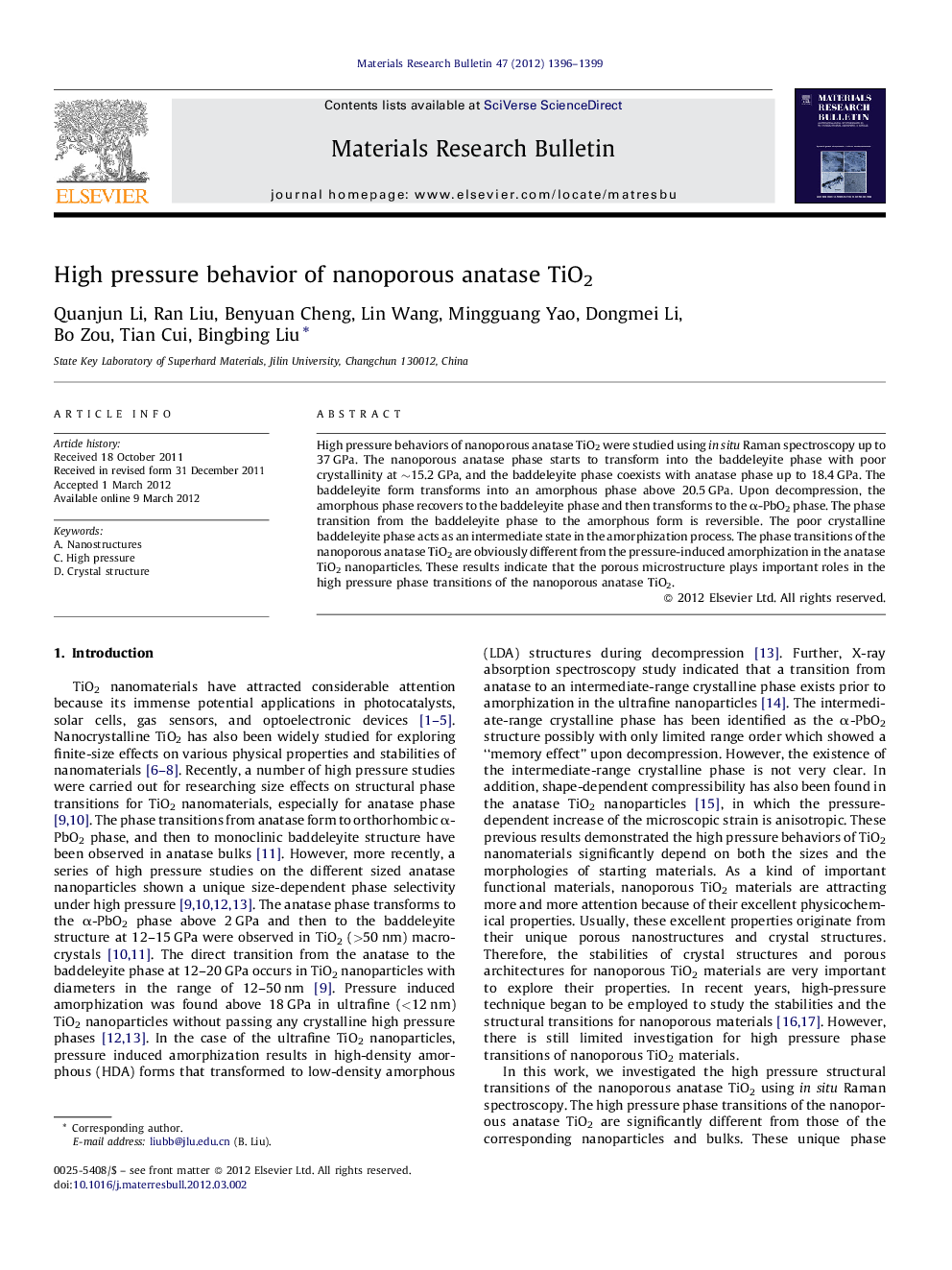| Article ID | Journal | Published Year | Pages | File Type |
|---|---|---|---|---|
| 1489766 | Materials Research Bulletin | 2012 | 4 Pages |
High pressure behaviors of nanoporous anatase TiO2 were studied using in situ Raman spectroscopy up to 37 GPa. The nanoporous anatase phase starts to transform into the baddeleyite phase with poor crystallinity at ∼15.2 GPa, and the baddeleyite phase coexists with anatase phase up to 18.4 GPa. The baddeleyite form transforms into an amorphous phase above 20.5 GPa. Upon decompression, the amorphous phase recovers to the baddeleyite phase and then transforms to the α-PbO2 phase. The phase transition from the baddeleyite phase to the amorphous form is reversible. The poor crystalline baddeleyite phase acts as an intermediate state in the amorphization process. The phase transitions of the nanoporous anatase TiO2 are obviously different from the pressure-induced amorphization in the anatase TiO2 nanoparticles. These results indicate that the porous microstructure plays important roles in the high pressure phase transitions of the nanoporous anatase TiO2.
Graphical abstractFigure optionsDownload full-size imageDownload as PowerPoint slideHighlights► The nanoporous α-PbO2 phase TiO2 was obtained for the first time. ► The reversible baddeleyite-amorphous phase transition was found. ► The porous microstructure plays important roles in the high pressure phase transitions of nanoporous anatase.
